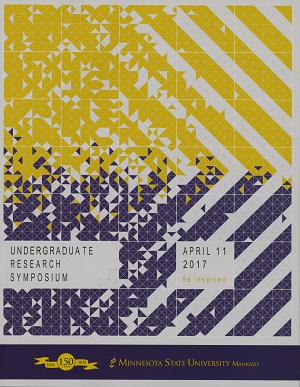A Corseted World: How this Binding Undergarment Affected a Dancer's Body
Location
CSU Ballroom
Start Date
11-4-2017 2:00 PM
End Date
11-4-2017 3:30 PM
Student's Major
Theatre and Dance
Student's College
Arts and Humanities
Mentor's Name
Julie Kerr-Berry
Mentor's Department
Theatre and Dance
Mentor's College
Arts and Humanities
Description
The purpose of this paper is to discuss the significance of the corset, or tutu, in ballet during the nineteenth and twentieth centuries, as well as when it was abandoned with the birth of American modern dance during the twentieth century. Whether on stage or in every day life, the corset was significant in helping women achieve the ideal physique during this particular time period, while at the same time, quite restrictive. Through historical analysis, this paper will focus on the social history that kept the corset in place, and what led to its removal. When dancers are required to perform in corsets, it only allows them to move their limbs instead of their entire body. Significant to this paper was Isadora Duncan, considered the mother of American modern dance, and how she disrupted this norm by removing the corset. She explored the ways the body could freely move. Removing the corset, Duncan showcased a new art form that expressed the body in a new light. She went against social norms and helped break away from the restrictions that women faced in the early twentieth century. Findings will reveal that social norms affected what women wore in dance and in life, and in this case, did not.
A Corseted World: How this Binding Undergarment Affected a Dancer's Body
CSU Ballroom
The purpose of this paper is to discuss the significance of the corset, or tutu, in ballet during the nineteenth and twentieth centuries, as well as when it was abandoned with the birth of American modern dance during the twentieth century. Whether on stage or in every day life, the corset was significant in helping women achieve the ideal physique during this particular time period, while at the same time, quite restrictive. Through historical analysis, this paper will focus on the social history that kept the corset in place, and what led to its removal. When dancers are required to perform in corsets, it only allows them to move their limbs instead of their entire body. Significant to this paper was Isadora Duncan, considered the mother of American modern dance, and how she disrupted this norm by removing the corset. She explored the ways the body could freely move. Removing the corset, Duncan showcased a new art form that expressed the body in a new light. She went against social norms and helped break away from the restrictions that women faced in the early twentieth century. Findings will reveal that social norms affected what women wore in dance and in life, and in this case, did not.
Recommended Citation
Pleiss, Abby. "A Corseted World: How this Binding Undergarment Affected a Dancer's Body." Undergraduate Research Symposium, Mankato, MN, April 11, 2017.
https://cornerstone.lib.mnsu.edu/urs/2017/poster-session-B/44



